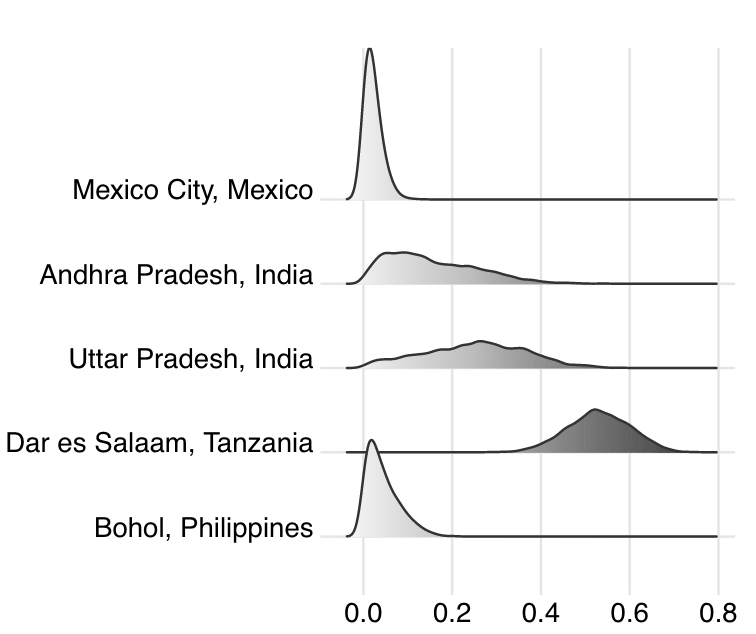Abstract
Understanding cause-specific mortality rates is crucial for monitoring population health and designing public health interventions. Worldwide, two-thirds of deaths do not have a cause assigned. Verbal autopsy (VA) is a well-established tool to collect information describing deaths outside of hospitals by conducting surveys to caregivers of a deceased person. It is routinely implemented in many low- and middle-income countries. Statistical algorithms to assign cause of death using VAs are typically vulnerable to the distribution shift between the data used to train the model and the target population. This presents a major challenge for analyzing VAs as labeled data are usually unavailable in the target population. This article proposes a Latent Class model framework for VA data (LCVA) that jointly models VAs collected over multiple heterogeneous domains, assign cause of death for out-of-domain observations, and estimate cause-specific mortality fractions for a new domain. We introduce a parsimonious representation of the joint distribution of the collected symptoms using nested latent class models and develop an efficient algorithm for posterior inference. We demonstrate that LCVA outperforms existing methods in predictive performance and scalability. Supplementary materials for this article and the R package to implement the model are available online.
Keywords Domain adaptation; Data shift; Classification; Mixture model; Dependent binary data; Quantification learning.
